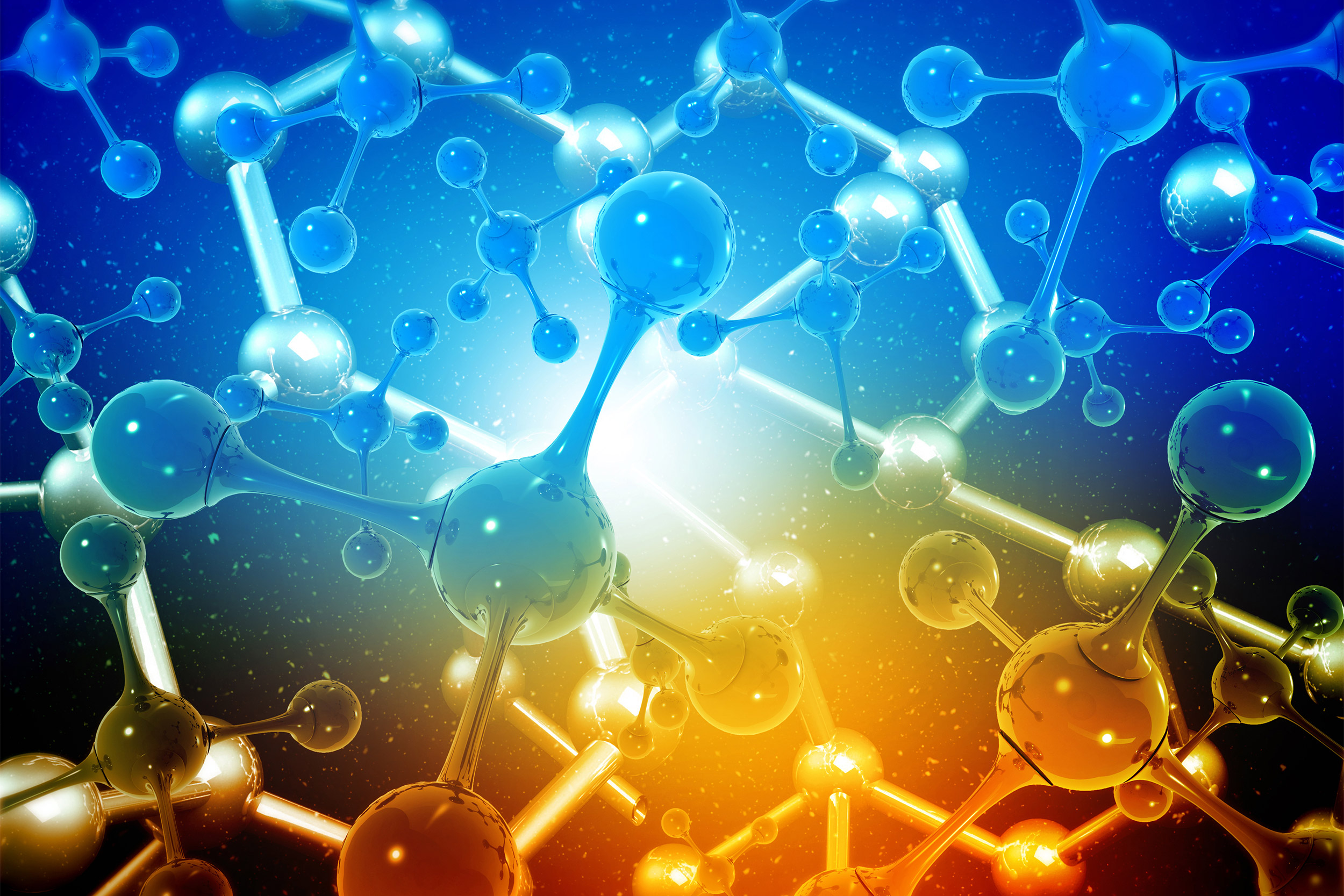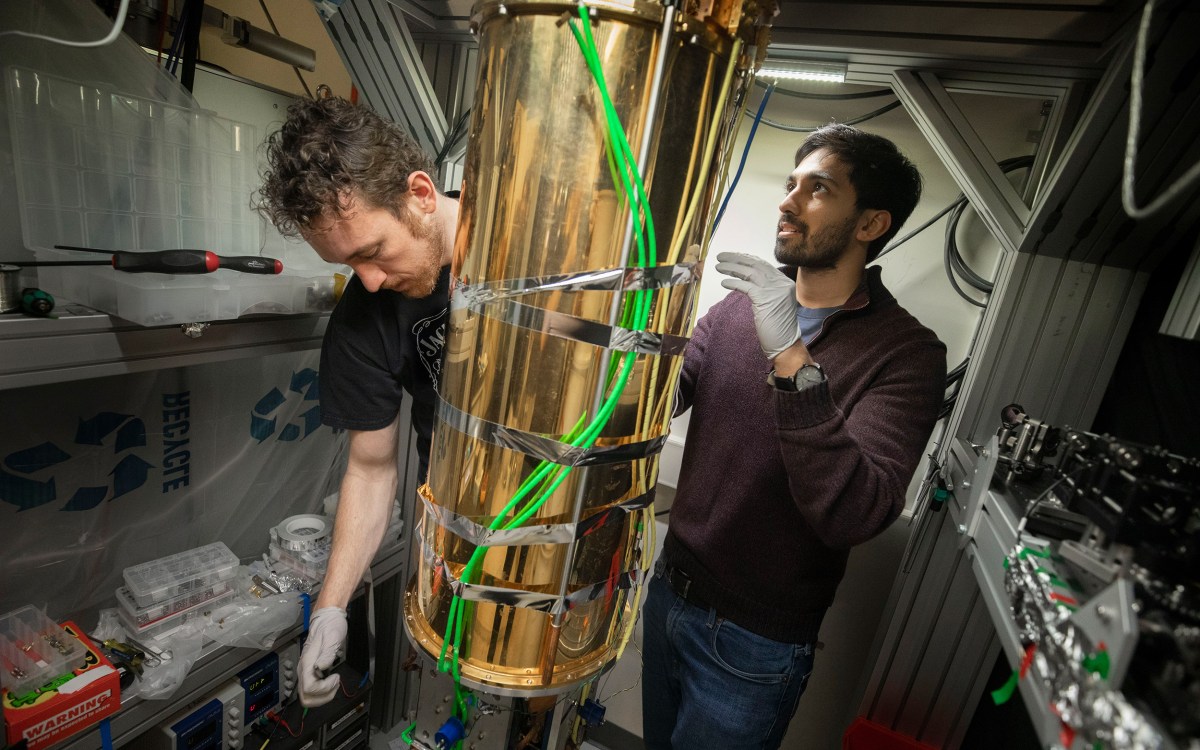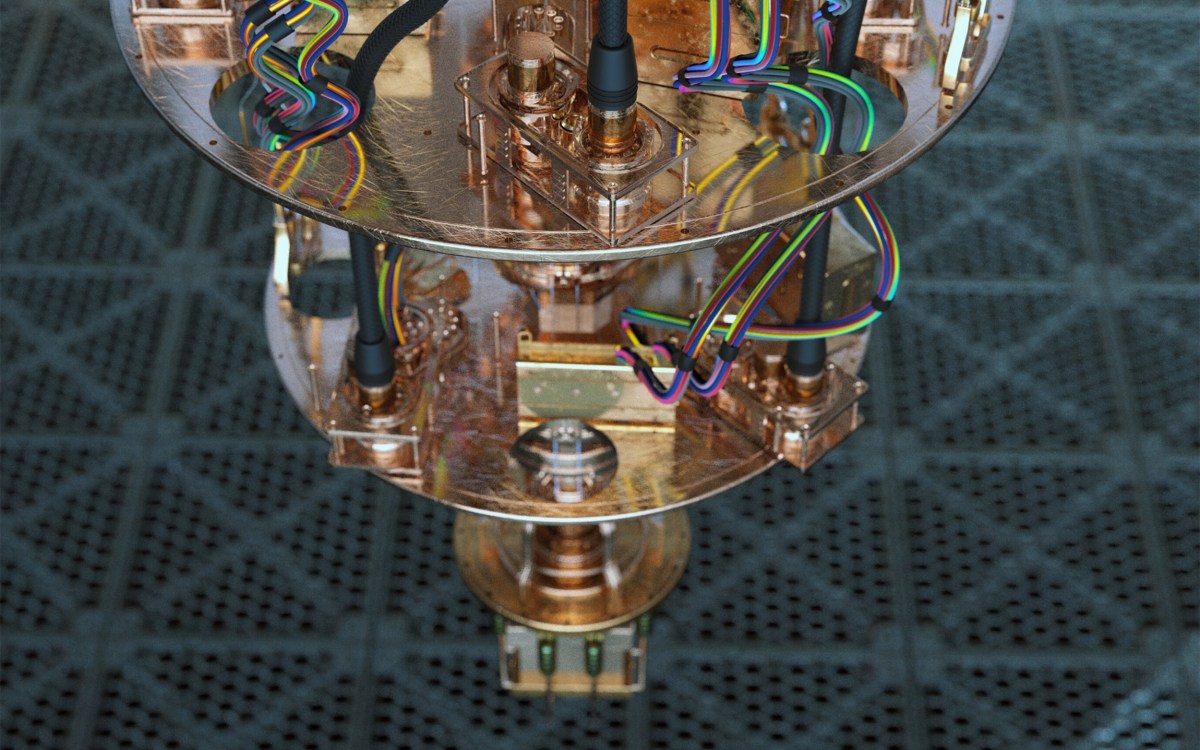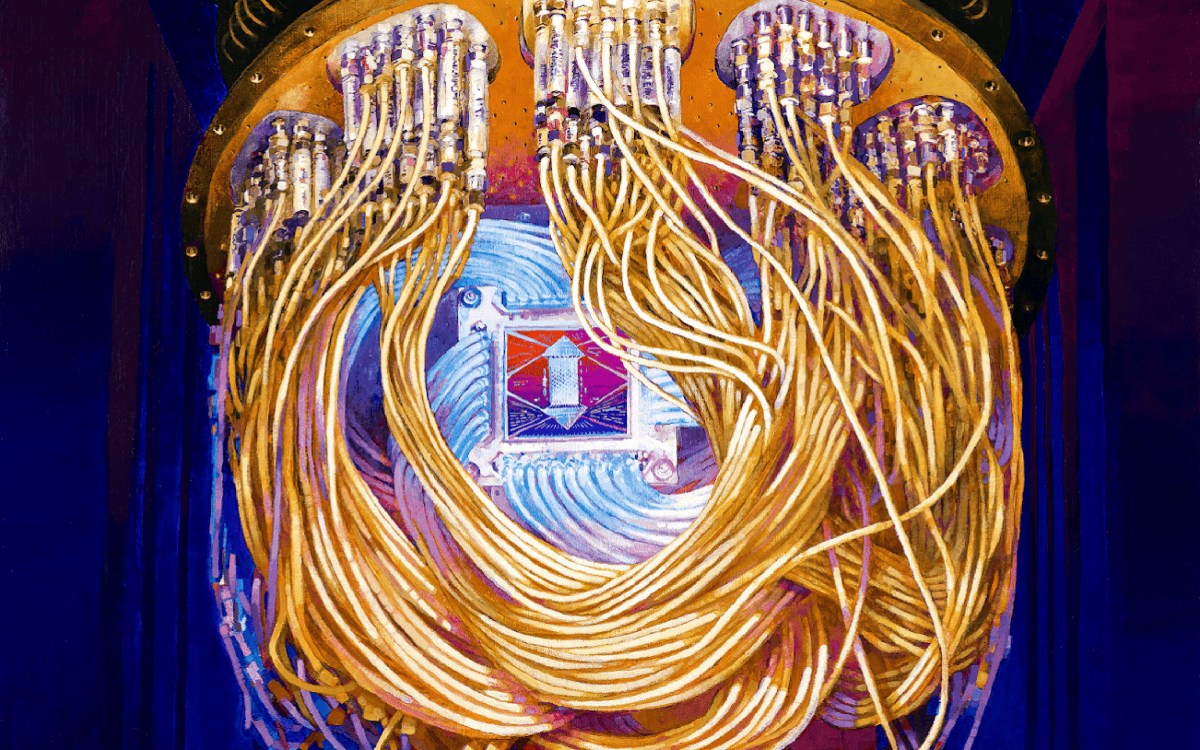
Rasi Bhadramani/iStock
A speedier solution for molecular biomedical research
New innovative algorithm analyzes NMR readings using quantum computers
A process called NMR spectroscopy that is often used to find and identify small molecules in biological samples such as blood and urine has become a powerful diagnostic tool for medical professionals, helping identify biomarkers of specific diseases and disorders.
But the technique has its limits, especially when researchers need to identify molecules that haven’t been catalogued already — that is, the vast majority of them.
A trio of doctors and medical researchers from Brigham and Women’s Hospital and Harvard Medical School wanted to make this complicated and time-consuming process a lot simpler, and hoped quantum physics could help. They figured that since the basics of NMR, short for nuclear magnetic resonance, is grounded in quantum mechanics, then perhaps a quantum computer could help push the technique beyond the current limits set by using ordinary computer processors to interpret the data.
The researchers from the Medical School enlisted a pair of quantum physicists from the Faculty of Arts and Sciences to help. Now, the combination of medical researchers and quantum scientists have published the results of their collaboration — a new algorithm for decoding signals from NMR readings that draws from both quantum computing and classical machine learning — in a new study in Nature Machine Intelligence.
The hybrid algorithm does, in theory, just what the researchers hoped. It would reduce a process that can take days for classical computers days into just minutes by using quantum systems that run on only 50 to 100 quantum bits, or “qubits,” the fundamental building blocks on which these computers operate. In other words, the algorithm works on both quantum computers that already exist and the so-called “near-term” quantum computers now being developed. These machines would act as a bridge between the intermediate period of current error- (or “noise-”) prone machines and the error-correcting, perfected versions envisioned to become reality decades from now.
The researchers believe the new hybrid algorithm can be one of the first applications for the not-so-distant intermediate computers, helping fill a growing need in practical applications of quantum technology as the hardware catches up with the theory. Quantum computers use the mysterious properties of matter at extremely small scales to greatly advance processing power and perform calculations that are virtually impossible for ordinary computers to solve.
In recent years, finding useful applications for existing or near-term quantum computers has been a central challenge for researchers, said Eugene Demler, professor of physics and one of the paper’s co-authors.
“We should not just think of applications for perfect quantum computers. We should think of applications of quantum computers for the near future,” Demler said. “It’s important to realize that we can use these non-perfect computers — these noisy, intermediate-scale quantum computers — to already study what’s important for biomedical research.”
The algorithm has only just passed the proof-of-concept stage, according to the paper, but it opens a door to possibilities in chemical, medical, and biological research using NMR if it can be expanded beyond the tests the researchers outlined.
Take blood, for example, said paper co-author Samia Mora, an associate professor of medicine at the Medical School and a cardiovascular medicine specialist at the Brigham. “We know there are thousands of molecules in the bloodstream, but right now with NMR we probably only measure about 200 [of them],” she said. “In the future, ideally, we would be able to expand this algorithm to be able to solve for this problem of what are these molecules in the bloodstream beyond the ones that we already know.”
Doctors could then base treatments, like cancer therapy, off those readings, or they could prescribe preventative measures if a patient has small molecules in his or her blood that correspond with heart disease. The readings could also help in drug discovery or vaccine research.
“Having a better understanding of the molecular signatures of diseases or treatments is really very impactful for many areas across many, many different disciplines,” Mora said.
Other Harvard researchers who worked on the study included Hesam Dashti, a research fellow at the Brigham and HMS, Olga Demler, an associate biostatistician at the Brigham and assistant professor at HMS, and Dries Sels, Demler’s postdoctoral fellow and the lead author of the study.
Sels and Demler had been searching for an opportunity like the one presented in the paper. They wanted a crack at a problem that has real-world applications, is hard for classical computers, yet could be solved using existing and near-term quantum computers. Quantum-assisted NMR spectroscopy checked all the boxes since the readings, called a spectrogram, are put together by measuring a complex set of quantum spins.
For example, to get a spectrogram, biological samples are placed inside a machine that has a magnetic field and are then bombarded with radio waves to excite the nuclear magnetic properties in the molecules. The NMR machine reads those spins as different signatures.
The recorded spectrogram, however, only contains very indirect information about the molecular structures, making analyzing and identifying those molecules a complex pattern-recognition problem. If the patterns aren’t recognized or previously known, it can take days or months of trial and error to put together an answer, because ordinary computers must make those computations one at a time.
Using a quantum system takes advantage of its ability to access and calculate faster, and makes use of a mathematical construct known as Hilbert space and the higher processing power of qubits. One qubit can be two traditional values at once, a pair can be four, and so on. The problem with the current or intermediate quantum computers, though, is that all that computing power accumulates a lot of noise, making the whole calculation inaccurate.
Hybrid algorithms have been proven to be an effective bridge to solve for this, so the researchers thought they might work here, too. In the paper, they describe how their hybrid algorithm uses classical statistical methods, like Bayesian machine learning, to cluster and refine the search to correct for errors brought on by the quantum part of the algorithm, leading to the correct molecule.
“There are three parts to the paper,” said Sels. “All three ingredients are necessary because if you leave out the first part where we restrict ourselves to these clusters of physical molecules, then basically you’ll start in some place that’s so far away from where you actually want to end up that you’ll be searching for it forever. And then in the last part, the same thing: If you don’t do it cleverly, then the noise levels of your quantum computer will be so high, they’ll just be going in circles — you’ll be randomly searching.”
They tested the algorithm using simple molecules that had only four quantum spins and had already been identified, so they knew whether the algorithm worked. The researchers hope to expand the algorithm’s capability so it can analyze and identify more-complex molecules. They also believe the algorithm can be extended to solve for other types of spectroscopic analysis using existing quantum computers.
“It probably took us 20 or so years to get to the current stage of development of quantum computing hardware,” Sels said. “The road ahead to quantum computers that can do error correction and are good enough to be plug-and-play devices is presumably equally as long. If we don’t have applications for these intermediate or current state-of-the-art machines, then we might face a quantum winter.”
Harvard’s Office of Technology Development has protected the intellectual property associated with this work and is exploring possible commercialization opportunities.
This work was supported by the Harvard Quantum Initiative, the National Science Foundation, the Army Research Office, the Harvard-MIT Center for Ultracold Atoms, and the National Heart, Lung, and Blood Institute. Dries Sels is a senior postdoctoral fellow of the Research Foundation – Flanders in Belgium.









